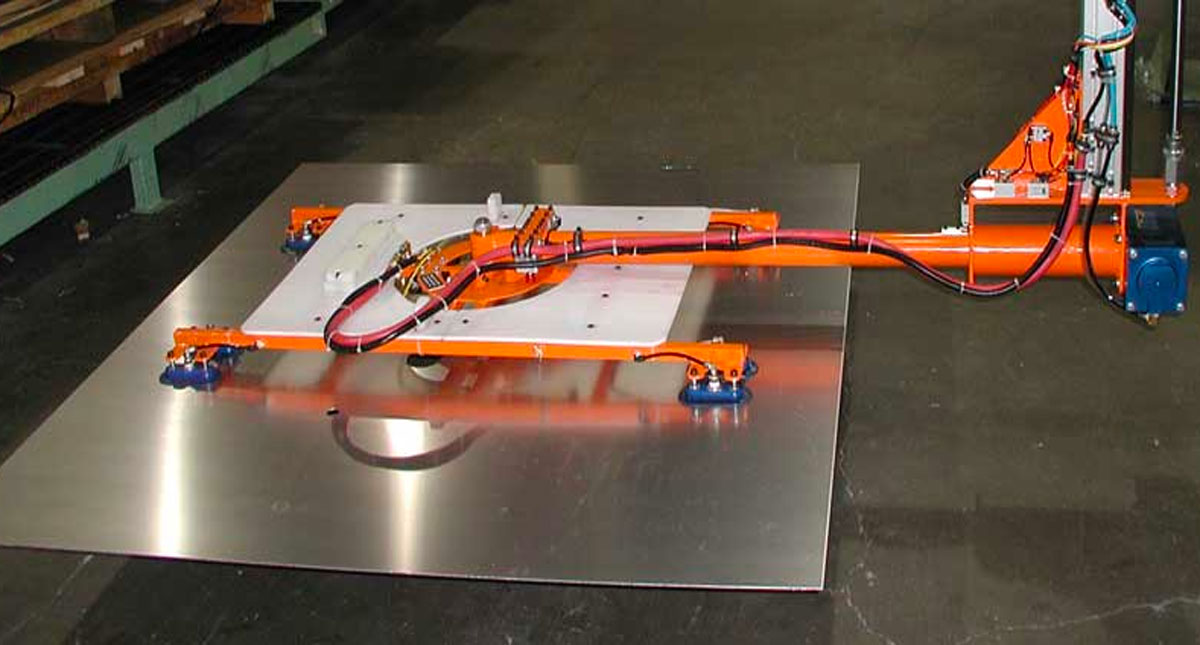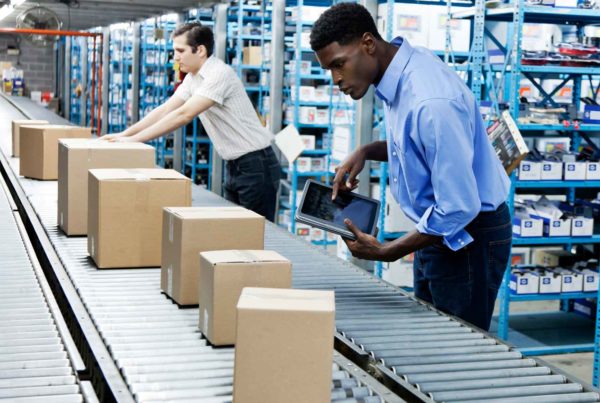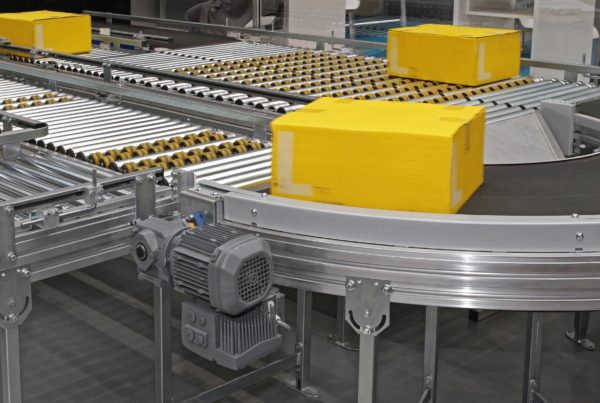In the past few decades, lift-assist technology has matured from adolescence, where it was limited to big-name companies lifting super-human loads, into adulthood in which it is becoming more commonplace among distribution and warehouse facilities. Today, lift-assist technologies can still be found in the automotive industry and tier-1 suppliers, but they have now also become ubiquitous in industries that once would have seen them as an unaffordable and unnecessary luxury. This is due in large part to the gains businesses see in a whole host of issues – including productivity, turnover, and morale – when lift-assist is properly implemented.
At the same time that businesses have seen the benefits of lift-assist, OSHA has been driving businesses to create work environments that continually improve their safety protocols. To this end, they have standardized the equipment and clarified the regulations. Strict limits have been put on the types of lift-assist technologies that are permitted in a factory or warehouse, and the tolerances that equipment can have. Companies that used to create in-house lift-assist solutions, and now find themselves confronted with disapproving OSHA inspectors, are now looking to third-party manufacturers and installers.
As part of our ongoing discussion with industry leaders who continue to innovate and advance everyday operations, I talked with Andrew Mathias, Senior Sales Engineer with ERGO Corporation. They’re an ergonomic lift-assist manufacturer based in Greer, South Carolina, who specializes in manufacturing customized lift-assist solutions.
The importance of employee engagement
One thing I’ve seen in my 30 years with PeakLogix is that we install equipment – be it automated conveyor, voice picking technology, lift-assist equipment, or something else – that’s meant to help our client’s staff. We take the time to train them. We do everything we can for them. But then the staff struggles to use their new equipment. They say it feels awkward, slows them down, or doesn’t meet any of their immediate needs.
Like anything else, this equipment has to be given a chance before it can bear fruit. When it isn’t used as often as it’s meant to be, any benefit the company was hoping to see becomes diluted.
The team at ERGO has had enough similar experiences that they developed a process to proactively circumvent this common reaction.
“When these guys say it slows them down,” says Mathias, “they aren’t wrong. There is a learning curve. For the first couple of days, it is awkward. And, many times, even once they’re used to it, it still slows down the performance they can have at the beginning of their shift. But as they grow comfortable with the equipment, and as fatigue would have set in later in their shift, this equipment can not only boost their productivity by about 25%, but it also leaves the employee feeling less fatigued when they go home.”
A trend that is developing across industries is that, for anything over 25lbs, companies are starting to require, and OSHA is starting to regulate, that lift-assist be used. “But no matter how common it’s becoming,” says Mathias, “you can’t go into a business and look at their set-up for 20 minutes and then bring out a schematic and tell these five- or ten- or twenty-year employees, ‘Here ya go. Here’s the solution.’ It doesn’t work like that.”
Instead, the team at ERGO works to include the facility’s staff “from the beginning of the project,” says Mathias. “These folks are living this. Eight hours a day, five days a week. We are invited guests who are trying to help, but they are the experts of their jobs. So when we draw up our specs, we take them to the floor and we ask the associates questions – what they think might work and what they think the problems are.”
Once the schematics are brought back to ERGO’s headquarters in South Carolina, their engineers manufacture the lift-assist solution. They then encourage the client to bring their staff and managers – and anyone else who has an investment in the equipment – to come out to their facility at Greer. ERGO stages the work environment and then runs real-world tests (to read our discussion of the benefits of Factory Acceptance Tests, follow this link).
“At that point,” says Mathias, “we listen to their input. Maybe the handlebars aren’t right, or something feels a little awkward… we take that opportunity to adjust the equipment to their specific feedback. They’re usually minor things, but that little bit of extra time to get the employees’ buy-in goes a long way in getting them engaged with the equipment. Often, people who are involved with the set-up like this will go back and promote the solution to their colleagues.”

Photo Credit: ERGO Corporation
The secret is ERGO’s ability to customize
This process of engaging employees works at ERGO in part because, according to Mathias, “90% of our equipment is customized. There really is no ‘one-size-fits-all’ solution in the lift-assist industry. Even if we have a base design that we developed in the past and can re-use, the actual interaction with the product will have to be customized.”
That ERGO is able to customize so much of their equipment is also the reason they are a top-tier lift-assist manufacturer for the warehousing industry.
“In the past,” says Mathias, “the warehousing industry didn’t think lift-assist technologies were compatible with their needs. There were too many variables – their product was too large, or too soft, or had to be moved in non-linear ways….”
While there are providers who offer warehousing facilities a manufactured set of standardized lift-assist tools, ERGO focuses on providing end-users with workable equipment upon delivery. This eliminates the need for the warehouse to retrofit specialized adapters in order to make “off-the-shelf” lift-assist equipment fit their own custom-built machinery.
ERGO is able to overcome challenges that other companies struggle with because, combined, their team has a century’s worth of engineering experience in the lift-assist industry; when they see a problem, it probably isn’t for the first time. This makes them comfortable and confident in their ability to design unique solutions to solve each client’s individual problems.
“We do have a set of standardized designs that we can pull from,” Mathias explains, “but we are able to let the product, the facility, and the environment dictate the style of end-tooling. Most of what we install has to be custom designed, to some degree.”
Quantifying the many returns on lift-assist investments
As with everything else, when businesses look to install lift-assist technologies, they worry about the return on investment. Most lift-assist equipment will go into the budget as capital expenditure. And, once installed, it will mitigate losses that companies have for years written off as the cost of doing business.
Injuries and damages are two common avenues of loss that Mathias has seen lift-assist help with. While these used to be considered hidden expenses, the market is now getting so competitive that businesses are drilling down into their losses farther than they ever had to in the past. They are ferreting out these costs that used to be ‘hidden,’ accounting for them, and looking for proactive solutions to them. It’s only after this data has been gathered – and these once-hidden expenditures accounted for – that a true cost-benefit analysis can be run on the implementation of lift-assist equipment in their facilities.
“You could bury yourself in studies that try to quantify the benefits of list-assist technologies,” says Mathias. Improved productivity, more flexible staffing options, higher morale and lower turnover, and injury prevention and reduction are some of the benefits companies can see when lift-assist is properly implemented.
“When you first install this equipment,” Mathias admits, “there’s an adjustment period. Many times, as we’ve said, people are a little bit slower for the first few days. But then, as they get used to the equipment, they find that their productivity throughout their shift goes up. Maybe they are a little slower when their first hour or two on a shift is compared before and after the installation. But then, when you look at what happens later in their shift, they find themselves becoming less fatigued, and their numbers actually improve. And this is easy to quantify – you’ll see about a 25% percent increase in their overall productivity.”
Because of the nature of lift assist, it also creates an environment in which more people are capable of doing tasks that were once reserved for the very physically robust. “Where before an employer might have looked at a job and said, ‘This is going to take a very strong person,’ now they can put any one of their teammates into that environment.
“For example,” Mathias explains, “we had a client who had to sort pallets of shingles. An order might come in with 50% of one color, 10% of another, 40% of a third… and our client used to have employees drive around in wheel-trucks with pallets on them, and they would physically stack and load these bundles of heavy shingles.
“We were able to design a vacuum powered, portable lift-assist system. And instead of having three very physically fit associates creating these bundles, they were able to use one – and it took that one associate 50% less time than it had previously taken three.”
Especially in smaller markets, or markets with competitive salaries, this democratization of labor can help a company find staff where before the labor would have been too expensive, or simply non-existent.
But some issues, Mathias admits, are harder to quantify, such as injury reduction. Take, for example, an individual who may have an “old football injury” – it’s hard to speculate whether he might require less downtime, or avoid aggravating such a legacy injury all together if he’s using lift-assist equipment. “But,” says Mathias, “when you take a longitudinal view of these studies, it becomes easy to see, in the aggregate, that a company will regain its expense on five or maybe even six pieces of equipment by saving themselves the expense of one injury.”
What Mathias seems most excited about is that at the end of their shift, these workers aren’t exhausted. People now leave work feeling more energized, and that’s really where you can see a boost in morale, and a lower turnover rate.
All things considered, when properly implemented, lift-assist technology is one decision that can dramatically improve a facility. It’s a piece of equipment that is both right for the company, and right for all of their people.




